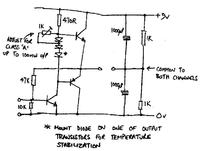Plecto
Full Member level 5
I refreshed this site every 30. minutes or so hoping for a reply, but I got too impatient so I etched the circuit. It does not work of course, steady odd looking 150khz or so oscillations. I added caps in parallel with the feedback resistors, but that didn't do anything (got up to 470nF at the end there).

